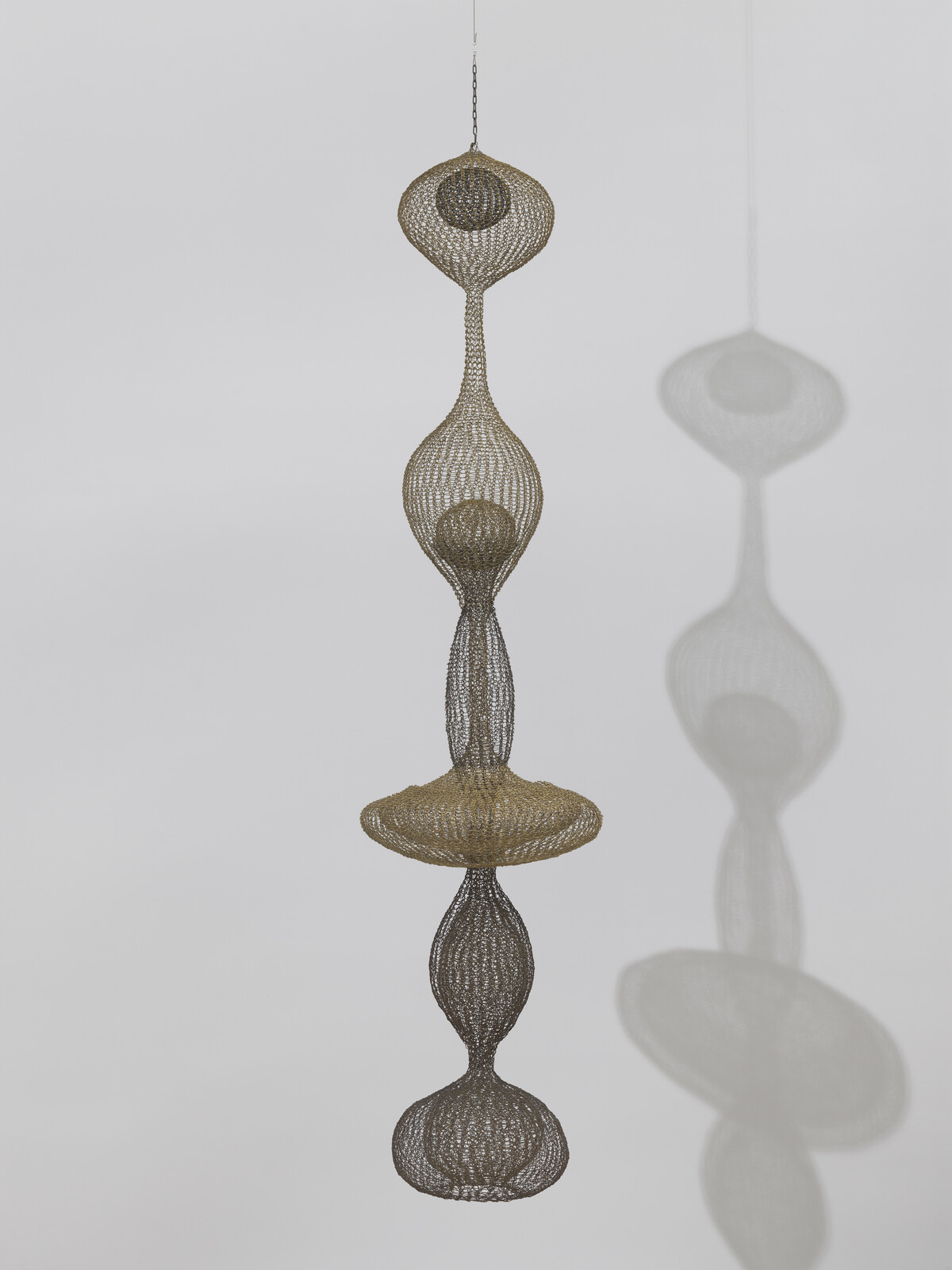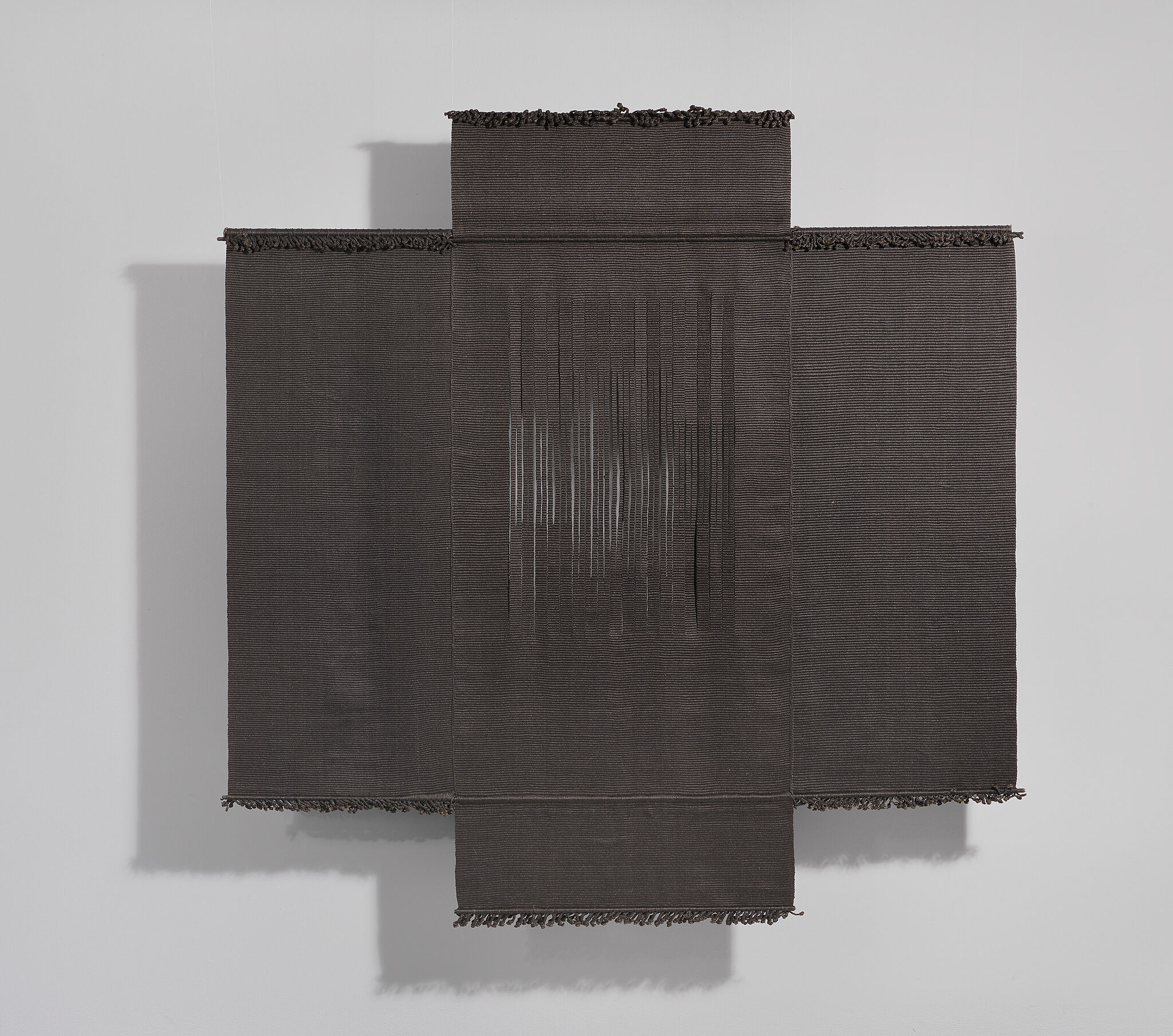Ruth Asawa, Untitled (S.270, Hanging Six-Lobed, Complex Interlocking Continuous Form within a Form with Two Interior Spheres), 1954, refabricated in 1958
Nov 6, 2019
0:00
Ruth Asawa, Untitled (S.270, Hanging Six-Lobed, Complex Interlocking Continuous Form within a Form with Two Interior Spheres), 1954, refabricated in 1958
0:00
Narrator: Ruth Asawa made sculptures like this one by weaving metal wire, a technique that she learned on a trip to Mexico City in 1947.
Ruth Asawa: That’s where I learned to knit and to knit with wire.
Narrator: Asawa attended Black Mountain College, an experimental art school that encouraged students to use everyday, found materials.
Ruth Asawa: If you take material you like to know how far you can take it from what it’s traditionally known to do. You find that you can go from two dimensions to three dimensions, that interests me. It can be any material. It doesn’t have to be wire.
Narrator: In 2002, the Archives of American Art recorded this oral history with Asawa. In it, she was asked whether it bothered her that her work might be seen in relation to craftmaking, rather than sculpting.
Ruth Asawa: It doesn’t bother me. Whether it’s a craft or whether it’s art. That is a definition that people put on things. And what I like is the material is irrelevant. It’s just that that happens to be material that I use. And I think that is important. That you take an ordinary material like wire and you give it a new definition. That’s all. I’m interested in what it can do by itself, that’s what excites me.
[Oral history interview with Ruth Asawa and Albert Lanier, 2002 June 21-July 5. Archives of American Art, Smithsonian Institution.]


